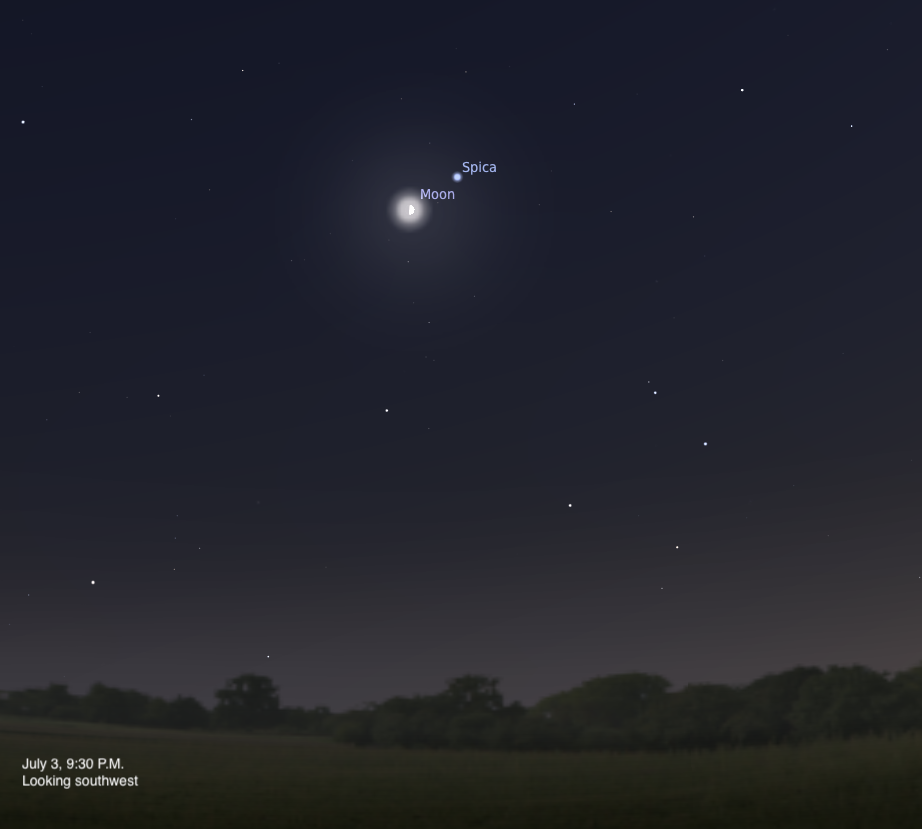Trundling along the ecliptic in Virgo, our satellite hangs near the bright star Spica in the evening sky.
Look southwest after sunset to spot the waxing Moon near the bright star Spica in Virgo. Credit: Stellarium/USGS/Celestia/Clementine
The Moon now passes 0.8° south of Spica at 6 P.M. EDT, with the pairing visible as evening twilight falls. (As with Mars earlier this week, some parts of the world will see Spica disappear behind the Moon in an occultation — this time, southern South America will get that view.)
By 9:30 P.M. local daylight time, the Moon sits to the lower left of Spica in the southwest. The star, which glows at magnitude 1.0, is an incredibly hot, massive star more than 10 times the mass of our Sun, shining with a piercing blue-white light that’s lovely through binoculars or any telescope. Take some time to enjoy the Moon under magnification as well, skimming along the terminator delineating lunar night from day, now centered on the nearside at First Quarter.
Sunrise: 5:36 A.M.
Sunset: 8:32 P.M.
Moonrise: 2:12 P.M.
Moonset: 12:41 A.M.
Moon Phase: Waxing gibbous (59%)
*Times for sunrise, sunset, moonrise, and moonset are given in local time from 40° N 90° W. The Moon’s illumination is given at 12 P.M. local time from the same location.
For a look ahead at more upcoming sky events, check out our full Sky This Week column.
